#south african electronic
Text
Sea Bee - Thiba (what language is this?)
#kwaito#south african electronic#sea bee#thiba#what language is this#south africa#africa#hip hop#1993#1990s
0 notes
Text
NEW ALBUM STREAMING NOW!!!
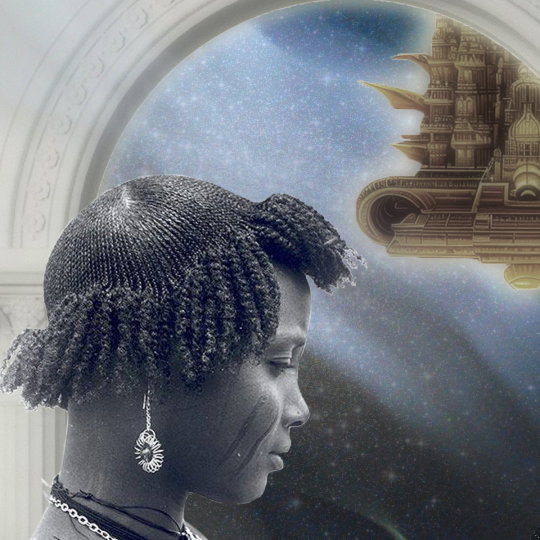
Roots & Mysticism EP, 44 1 Khz WAV is the new album from Emalahleni, South Africa based lo-fi Afro-electronica / ambient / spiritual artist Kukhanyakwensimi Ofuren Ngwenya, released August 15th, 2024.
Listen to the full album now:
youtube
#ambient#african music#world music#electronic music#lofi#spiritual#blues#south african music#heritage harmony records#Youtube
2 notes
·
View notes
Text
youtube
Hey, anyone here from South Africa? I found this rare cover of Dee D. Jackson's "Automatic Lover" sung by someone named Amanda, and produced by Kevin Kruger (also responsible for HOT R.S. and Disco Rock Machine).
#Amanda#Automatic Lover#Dee D. Jackson#1970s#70s#70er Jahre#70-ті роки#1970s music#70s music#Musik der 70er#музика 70-х#South Africa#South African music#Kevin Kruger#HOT R.S.#Disco Rock Machine#disco#electronic disco#electro disco#space disco#electronic music#electronic dance music#EDM#музика диско#електронна диско#електро диско#спейс-диско#електронна музика#електронна танцювальна музика#Південна Африка
0 notes
Text

In "THE STORE ROOM" this week, we are walking into some love classics. This was basically curated by someone sacred to me so please, I do not take credit for such greatness. I had a totally different list going into this week, hence my delayed post.
I was quite conflicted about sharing this but sometimes we need to remember the beginning to see how far we have met ourselves in the journey. This post is definitely a spiritual souvenir.
May these songs remind you that belonging requires no effort. We can't accept ourselves fully if we desire to know more about who we can be. The nature of the house music truly nurtures us most when we are open to the dancefloor. I don`t know where I was going with that but enjoy.
Liquid Deep- Fairytale
N’Dinga Gaba - Summer Breeze Raw Artistic Soul Remix
Kings of Tomorrow (feat. April Morgan) Sandy Classic Mix - Fall For You
Beatsbyhand ft. (Rona Ray) - Say Yes
Alexkid - Love We Have
Kaskade, Joslyn - It’s You, It’s Me
#south african deep house#house music#dance music#deep house south africa#south african music#electronic music#Classic house music#House music classics#amapiano#music blogging#afrobeats#afro house#amapiano groove#amapiano dance#Didi Lifestyle#Dj Mix#Dj Set#Tomorrowland#Hi Ibiza#Rocking The Daisies#afrotech#afrofusion#afrohouse#Dj lifestyle#New Music#Love music#the house district#Classic House grooves#Dj Bookings#dj mixes
1 note
·
View note
Text
Check out this post… "BLACK COFFEE SELLS OUT MADISON SQUARE GARDEN IN THE U.S: HISTORICAL MOMENT".
#Afro house#art#house#House music#Deep house#Electronic house#Madison Square Garden New York#South African#Dj#Producer#Black coffee#Afro beats
0 notes
Text
Song of the Week: "Abathembu" by uKhoiKhoi
Song of the Week: “Abathembu” by uKhoiKhoi
uKhoiKhoi – “Abathembu”
uKhoiKhoi are the duo from Johannesburg, South Africa of musician & composer Yogin Sullaphen and vocalist & performing artist Anelisa Stuurman. They mix traditional indigenous music and operatic expressions with electronic beats and live looping for a unique Afro-Futuristic sound.
Songs of the Week for 2023
January
“Happiness” by THICK
“Abathembu” by uKhoiKhoi
youtube
View On WordPress
#African music#Electronic#Indigenous music#Music#Opera#Song of the Week#South Africa#uKhoiKhoi#Youtube
1 note
·
View note
Text
Still Hertz II from FRNGE & kem.inc
Great music
Proceeds from purchase go to charity
0 notes
Text
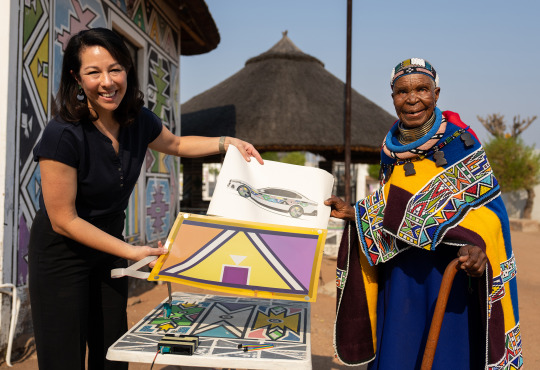

BMW i5 Flow NOSTOKANA, 2024. The latest BMW Art Car combines colour-change technology developed by BMW with the artistic language of South African Ndebele artist Esther Mahlangu. In 1991, Mahlangu designed the 12th BMW Art Car, based on an E34 series BMW 525i – becoming the first woman and first African artist to do so. In the BMW i5 Flow NOSTOKANA, which is named after Mahlangu’s first son, sections of film that can be electronically animated are applied, with two strips each across the roof, bonnet and rear section, as well as the vehicle’s sides. The new car has been presented at the Frieze Los Angeles art fair
#BMW#BMW i5 Flow#BMW i5 Flow NOSTOKANA#Esther Mahlangu#BMW Art Car#2024#colour change#Frieze Art Fair#Frieze Los Angeles#BMW 5-series#video#Ndebele painting
280 notes
·
View notes
Text
I hate Abstract Hip Hop African Music Afrobeats Alt-Country Alté Alternative Dance Alternative R&B Alternative Rock Alt-Pop Ambient Ambient Dub Ambient Pop Ambient Techno Americana Art Pop Art Punk Art Rock Avant-Garde Jazz Ballroom Baltimore Club Bedroom Pop Blues Boom Bap Brazilian Music Breakbeat Breakbeat Hardcore Bubblegum Bass Caribbean Music Central African Music Chamber Folk Chamber Pop Chicago Drill Chillout Chillwave Classical Music Cloud Rap Conscious Hip Hop Contemporary Folk Contemporary R&B Country Country Soul Dance Dancehall Dance-Pop Deconstructed Club Deep House Detroit Techno Disco Downtempo Dream Pop Drill Drill and Bass Drone Drum and Bass Drumless Dubstep Dub Techno East Coast Club East Coast Hip Hop Electro Electroacoustic Electronic Electronic Dance Music Electropop Emo Emo Rap Experimental Experimental Hip Hop Experimental Rock Film Soundtrack Folk Folk Rock Footwork French Hip Hop Funk Funk brasileiro Funk Rock Future Garage Gangsta Rap Garage Punk Garage Rock Ghetto House Ghettotech Glitch Glitch Hop Glitch Pop Grime Hard Bop Hardcore [EDM] Hardcore Hip Hop Hardcore [Punk] Hardcore Punk Hip Hop Hip Hop Soul Hip House Hispanic American Music Hispanic Music Horrorcore House Hyperpop Hypnagogic Pop IDM Indie Folk Indie Pop Indie Rock Indietronica Industrial Industrial & Noise Industrial Hip Hop Industrial Techno Instrumental Hip Hop Jamaican Music Jangle Pop Jazz Jazz-Funk Jazz Fusion Jazz Rap Juke Jungle Krautrock Math Pop Math Rock Memphis Rap Microhouse Midwest Emo Minimal Synth Minimal Techno Minimal Wave Modern Classical MPB Neo-Psychedelia Neo-Soul New Wave Noise Pop Noise Rock Northern American Music Nu Jazz Outsider House Plugg PluggnB Plunderphonics Political Hip Hop Pop Pop Rap Pop Rock Pop Soul Post-Bop Post-Hardcore Post-Industrial Post-Punk Post-Punk Revival Post-Rock Power Pop Progressive Breaks Progressive Electronic Progressive Pop Psychedelia Psychedelic Folk Psychedelic Pop Psychedelic Rock Psychedelic Soul Punk Punk Rock R&B Reggae Regional Music Rock Shoegaze Singer-Songwriter Slacker Rock Slowcore Smooth Soul Sophisti-Pop Soul Soul Jazz Sound Collage Soundtrack South American Music Southern African Music Southern Hip Hop Southern Soul Spiritual Jazz Spoken Word Synth Funk Synthpop Tech House Techno Traditional Folk Music Trap Trap Soul Trip Hop UK Bass UK Funky UK Garage UK Hip Hop West African Music West Coast Hip Hop Western Classical Music Wonky
80 notes
·
View notes
Text

House is a music genre characterized by a repetitive four-on-the-floor beat and a typical tempo of 120 beats per minute as a re-emergence of 1970's disco. It was created by DJs and music producers from Chicago's underground club culture and evolved slowly in the early/mid 1980s, and as DJs began altering disco songs to give them a more mechanical beat. By early 1988, House became mainstream and supplanted the typical 80s music beat
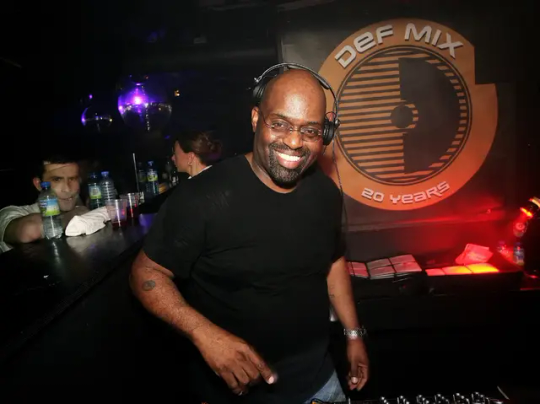
House was created and pioneered by DJs and producers in Chicago such as Frankie Knuckles, Ron Hardy, Jesse Saunders, Chip E., Joe Smooth, Steve "Silk" Hurley, Farley "Jackmaster" Funk, Marshall Jefferson, Phuture, and others. House music initially expanded internationally, to London, then to other American cities, such as New York City, and ultimately a worldwide phenomenon.

In its most typical form, the genre is characterized by repetitive 4/4rhythms including bass drums, off-beat hi-hats, snare drums, claps, and/or snaps at a tempo of between 120 and 130 beats per minute (bpm); synthesizerriffs; deep basslines; and often, but not necessarily, sung, spoken or sampled vocals. In house, the bass drum is usually sounded on beats one, two, three, and four, and the snare drum, claps, or other higher-pitched percussion on beats two and four. The drum beats in house music are almost always provided by an electronic drum machine, often a Roland TR-808, TR-909, or a TR-707. Claps, shakers, snare drum, or hi-hat sounds are used to add syncopation. One of the signature rhythm riffs, especially in early Chicago house, is built on the clave pattern. Congas and bongos may be added for an African sound, or metallic percussion for a Latin feel
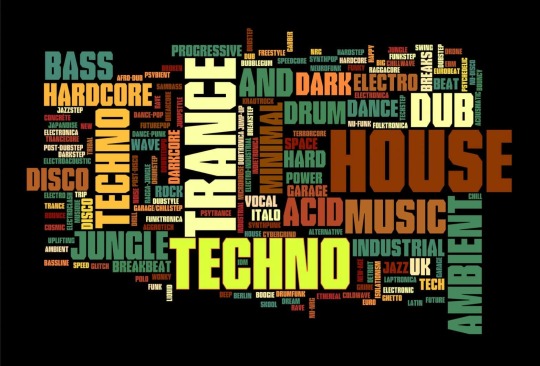
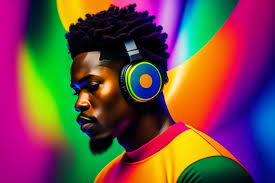
One book from 2009 states the name "house music" originated from a Chicago club called the Warehouse that was open from 1977 to 1982. Clubbers to the Warehouse were primarily African, gay men, who came to dance to music played by the club's resident DJ, Frankie Knuckles, who fans refer to as the "godfather of house". Frankie began the trend of splicing together different records when he found that the records he had were not long enough to satisfy his audience of dancers. After the Warehouse closed in 1983, eventually the crowds went to Knuckles' new club, The Power House, later to be called The Power Plant, and the club was renamed, yet again, into Music Box with Ron Hardy as the resident DJ. The 1986 documentary, "House Music in Chicago", by filmmaker, Phil Ranstrom, captured opening night at The Power House, and stands as the only film or video to capture a young Frankie Knuckles in this early era, right after his departure from The Warehouse.
In the Channel 4 documentary Pump Up the Volume, Knuckles remarks that the first time he heard the term "house music" was upon seeing "we play house music" on a sign in the window of a bar on Chicago's South Side. One of the people in the car joked, "you know that's the kind of music you play down at the Warehouse!" In self-published statements, South-Side Chicago DJ Leonard "Remix" Rroy claimed he put such a sign in a tavern window because it was where he played music that one might find in one's home; in his case, it referred to his mother's soul and disco records, which he worked into his sets

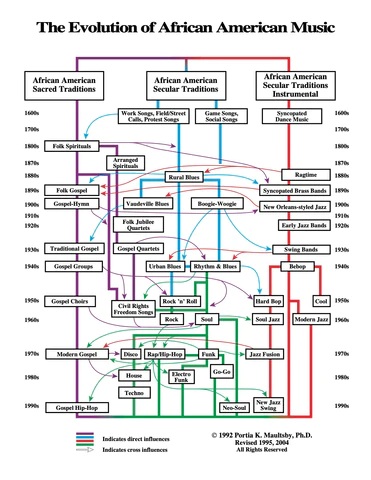
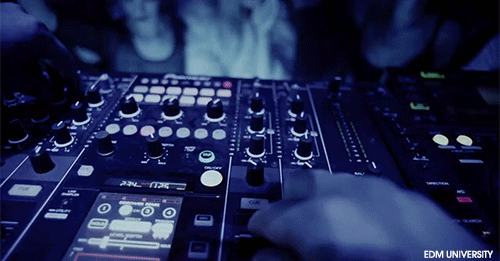
#house music#african music#chicago#african#afrakan#kemetic dreams#brownskin#africans#brown skin#afrakans#african culture#frankie knuckles#Farley “Jackmaster” Funk#dance#evolution of african american music
97 notes
·
View notes
Text
Vedic Astrology Observations
Uttarashada natives often have very mongoose like features (esp face shape) since mongoose is its yoni animal. Often times these natives have a very small head.
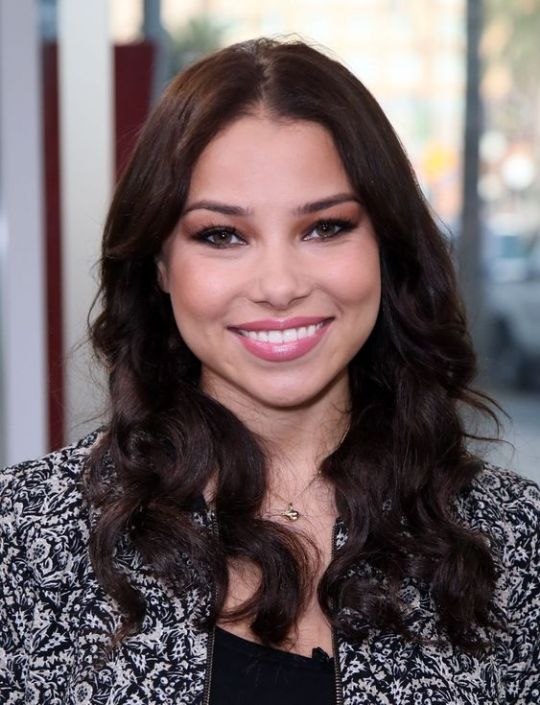

Jessica Parker Kennedy is an Uttarashada Moon


Jennie is UA sun & Jane Levy is UA moon. Notice how they both have a similar eye shape and tapered chin.
2. Punarvasu girlies have such doll like faces. Punarvasu is considered the most feminine nakshatra and I think that impacts the physiognomy of its natives, giving them very cute, dainty, hyper feminine features.


Isabella Moner & Billie Lourd are both Punarvasu sun


Both Karina & Miranda Kerr are Punarvasu moon
3. Hasta Moon women are celebrated for their femininity in the world of entertainment. Since Hasta is ruled by the Moon, these natives are endowed with pleasant demeanour and natural vibrancy.
Dita Von Teese, who is known for emulating a hyper feminine 1930s starlet glamour, has Hasta sun & mercury (her moon is in another feminine nak of Mrigashira while her Ketu resides in yet another feminine nak of Punarvasu)
Bae Suzy, who is known as "First Love of the Nation" in South Korea, because her youthfulness and innocence reminds people of their "first love" has Hasta sun.


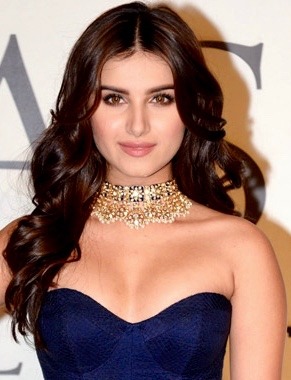
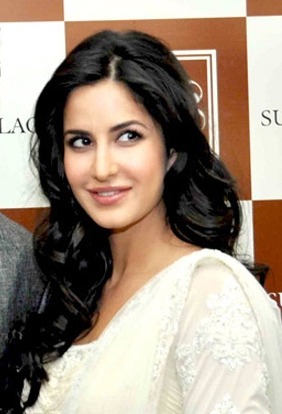

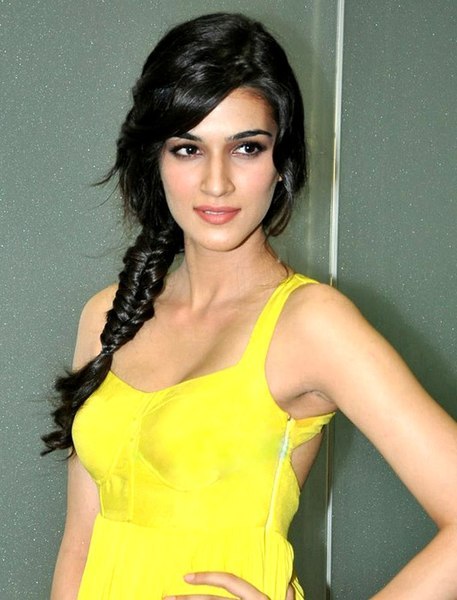
A lot of Bollywood actresses have big 3 Hasta placements, Katrina Kaif, Kriti Sanon, Tamanna Bhatia and Tara Sutaria are all Hasta moon.
(I'll probably make a separate post about this but these women fit North Indian beauty standards and Moon dominant women are always considered the North Indian ideal)
(Notice how all of them have slightly thin long noses and big-ish foreheads and an elongated eye shape?)
Anne Hathaway, Emma Stone, Ariana Grande, Kate Winslet, Karlie Kloss, Anya Chalotra, Lili Reinhart, Kristen Bell, Isabelle Adjani are all Hasta moons and most of them are known for their grace and elegance, while others are known for their girl next door persona.
4. Uttarashada & Purvashada natives are drawn to grandness, luxury and big gestures. In music, I've noticed how many musicians who make music that synthesizes and integrates many diverse sounds, genres and perhaps cultural influences often have Uttarashada placements.
Ryuichi Sakamoto, who often mixed electronic music with African, Chinese, Indian (and many others) music and was known for his "East Meets West" style had Uttarashada sun.
Daft Punk, the French electronic music duo is also known for mixing funk, synth pop, techno, disco and other genres with electronic music. The duo consists of Thomas Bangalter, who has Purvashada Sun, Uttaradhada Mercury & Venus, and Guy Manuel de Homem Christo has Uttarashada Venus.
Cher, who was also known for working across genres has Purvashada moon.
Damon Albarn, who created the virtual band Gorillaz has Uttarashada moon.
Bjork who is known for her unique music has Purvashada Venus
5. A lot of musicians who have a robotic/virtual reality/futuristic concept often have Uttara bhadrapada, Punarvasu and Revati placements.
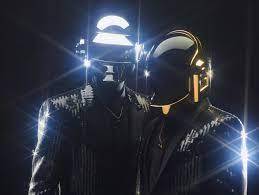


Guy from Daft Punk is UBP rising with Punarvasu saturn.
Damon Albarn who created the virtual band Gorillaz has UBP sun, Revati saturn amatyakaraka.
Grimes, known for her aliencore, cyberpunk sound/aesthetic has UBP sun
6. Punarvasu natives often make very airy,soft, gentle, "glam" music. They're often very synth heavy and very inspired by 80s esque retro pop. Kali Uchis who has Punarvasu sun, Dua Lipa, Chaka Khan and Mariah Carey who have Punarvasu moon are good examples.

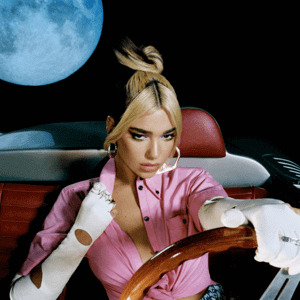

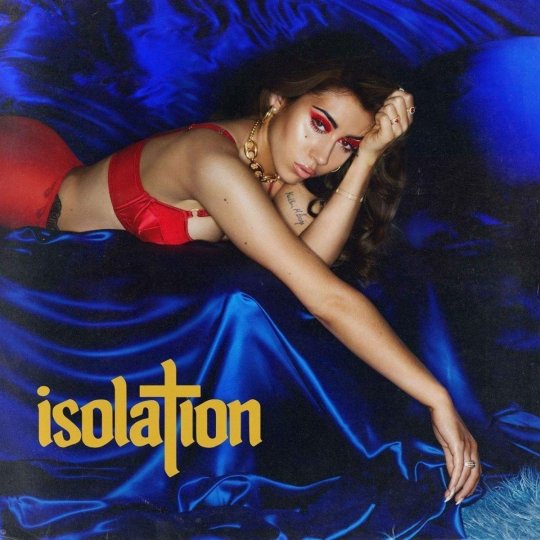
(Notice how even these pictures radiate a very similar glittery, retro glam aesthetic)
#vedic astrology#vedic astro notes#astro observations#astro notes#sidereal astrology#nakshatras#music astrology#astro beauty
346 notes
·
View notes
Text

Encyclopedia of American Race Riots [2 volumes]: Greenwood Milestones in African American History [2 volumes] Illustrated Edition
Click the title to download free, and please share it
2008 Ida B. Wells and Cheikh Anta Diop Award for Outstanding Scholarship in Africana Studies
2007 Choice Outstanding Academic Title
Race riots are the most glaring and contemporary displays of the racial strife running through America's history. Mostly urban, mostly outside the South, and mostly white-instigated, the number and violence of race riots increased as blacks migrated out of the rural South and into the North and West's industrialized cities during the early part of the twentieth-century.
Though white / black violence has been the most common form of racial violence, riots involving Asians and Hispanics are also included and examined. Race riots are the most glaring and contemporary displays of the racial strife running through America's history. Mostly urban, mostly outside the South, and mostly white-instigated, the number and violence of race riots increased as blacks migrated out of the rural South and into the North and West's industrialized cities during the early part of the twentieth-century.
While most riots have occurred within the past century, the encyclopedia reaches back to colonial history, giving the encyclopedia an unprecedented historical depth.
Though white on black violence has been the most common form of racial violence, riots involving other racial and ethnic groups, such as Asians and Hispanics, are also included and examined.
Organized A-Z, topics include: notorious riots like the Tulsa Riots of 1921, the Los Angeles Riots of 1965 and 1992; the African-American community's preparedness and responses to this odious form of mass violence; federal responses to rioting; an examination of the underlying causes of rioting; the reactions of prominent figures such as H. Rap Brown and Martin Luther King, Jr to rioting; and much more. Many of the entries describe and analyze particular riots and violent racial incidents, including the following:
Belleville, Illinois, Riot of 1903 Harlem, New York, Riot of 1943 Howard Beach Incident, 1986 Jackson State University Incident, 1970 Los Angeles, California, Riot of 1992 Memphis, Tennessee, Riot of 1866 Red Summer Race Riots of 1919 Southwest Missouri Riots 1894-1906 Texas Southern University Riot of 1967
Entries covering the victims and opponents of race violence, include the following:
Black Soldiers, Lynching of Black Women, Lynching of Diallo, Amadou Hawkins, Yusef King, Rodney Randolph, A. Philip Roosevelt, Eleanor Till, Emmett, Lynching of Turner, Mary, Lynching of Wells-Barnett, Ida B.
Many entries also cover legislation that has addressed racial violence and inequality, as well as groups and organizations that have either fought or promoted racial violence, including the following:
Anti-Lynching League Civil Rights Act of 1957 Economic Opportunity Act of 1964 Ku Klux Klan National Association for the Advancement of Colored People (NAACP) Nation of Islam Vigilante Organizations White League Other entries focus on relevant concepts, trends, themes, and publications.
Besides almost 300 cross-referenced entries, most of which conclude with lists of additional readings, the encyclopedia also offers a timeline of racial violence in the United States, an extensive bibliography of print and electronic resources, a selection of important primary documents, numerous illustrations, and a detailed subject index.
click the title to download - free, and please share it
#Encyclopedia of American Race Riots#American Riots#Black Uprisings#american hate#white supremacy#documents of lynching
25 notes
·
View notes
Text
1990s Drum n Bass Playlist
Back to the Sunday night electronic playlist-posting mines for the next good while. This week I've got a little update to my 90s drum n bass playlist, with something that's very dark and something that's much, much lighter.
The dark one comes courtesy of a guy from the UK called Ambush, whose career only consisted of a couple 12-inches and an album between '96 and '98, and is not to be confused with *The Ambush,* which is an alias of German electronic music legend Oliver Lieb. Ambush made his debut with a 12-inch called Gain on Possible Records, a dark dnb label that was founded by Mick Harris, who was the former drummer in famed death metal band Napalm Death.
Taking up the A-side on Gain is a tune called "Tracking," which would later find its way onto a Possible double-disc comp called Sonics Everywhere in 1997. "Tracking" is this steadily burrowing piece of filthy subterranean grime, with this constant no-give snare hitting on every other beat while a simply demonic, distorted sub-bassline rumbles mercilessly beneath it 😈; potential theme music for the single-most evil entity in the universe. Only has ~1,100 plays on Spotify.
And for the yang to "Tracking"'s Yin, we have something pretty dang unique. UK future jazz-funk band RSL are not known for making drum n bass, but it appears that, three years prior to their debut release, they first appeared on a South African compilation in 1998 called ReRooted: Beatz From Da Ground Up, with "Elungelo." This is a song that appears to be sampling soulful traditional African folk vocals and then pairs them with beats—first, a nice and chill-grooved, bare-bones trip hop one, and then a sudden shift to dnb. And to be honest, I kinda dig the trip-hoppy portions more on this one, but if something has a considerable amount of drum n bass on it, then it automatically gets categorized as a dnb tune; those are just the rules. Around 9,100 plays.
Ambush - "Tracking"
RSL - "Elungelo"
And for the YouTube version of this update, I was able to add those two songs to it too, but I also added another one that can't be found on Spotify as well. And this is another dark one, from a master of those dark dnb arts himself, Technical Itch. In '98, this Birmingham, UK native applied his craft with a remix of Manchester, UK act Perfect Combination's "Remember." Scratchy and blown-out snares, wormy bass squelching, and an occasional eerie synth to remind you where you are, which is a place that you really need to escape from, pronto 😰. This remix has appeared on a double-12-inch called Partisan Volume One, one of the first releases in the catalog of Partisan, an ultimately short-lived label that was launched after a group of staffers acrimoniously split from dnb juggernaut Moving Shadow. Song has a little over 4,800 plays on YouTube across a few different uploads.
Perfect Combination - "Remember (Technical Itch Remix)"
And this playlist is on YouTube Music too.
So this update now brings us to 13 songs that total 84 minutes on Spotify, but over on YouTube, we're now at 30 songs that total 191 minutes! There's just so much more great, obscure 90s dnb in that YouTube one, including a handful of cuts from a compilation that's not even listed on Discogs called Now What Kind of Music Do You Call That?
And if you want something shorter, I've also got a couple dnb playlists that are specific to a certain year from the 1990s:
1997 Drum n Bass: YouTube / YouTube Music
1998 Drum n Bass: YouTube / YouTube Music
Next week, some breakbeat!
Enjoy!
More to come, eventually. Stay tuned!
Like what you hear? Follow me on Spotify and YouTube for more cool playlists and uploads!
#drum n bass#drum & bass#drum and bass#dnb#d n b#d and b#d&b#d & b#dance#dance music#electronic#electronic music#music#90s#90s music#90's#90's music#playlist#playlists#spotify playlist#spotify playlists#youtube playlist#youtube playlists#youtube music playlist#youtube music playlists#Spotify
20 notes
·
View notes
Text
Hello friends. Would you like to meet the antagonist of Faust's route? The dastardly entity responsible for untold pain and misery, for putting our intrepid couple through the metaphorical wringer? The arch-enemy of mankind for centuries??
(spoilers behind the cut)

Here you go! Yersinia pestis, or Y. pestis to its friends, in all its gram-negative, electron scanned, color enhanced glory.
Aww, but Mrs O, you say, it's so cute! Look at its widdle fimbriae waving hewwo! Its pastel pink Lisa Frank inspired palette!
But don't be fooled! This tiny cold-blooded killer is responsible for more deaths than possibly any other infectious agent in the history of humankind - we all know it as the bubonic plague. The Black Death. It's cut down hundreds of millions of people over the course of human history, and it is still a threat today.
Transmitted to humans primarily by the bite of fleas, Y. pestis is a nasty character - without treatment, mortality rates upon infection are 30% - 90%. It sets up shop in a nearby lymph node, gets busy, and the resulting damage causes tissues to die. Victims tend to develop large, swollen, and painful lymph nodes called buboes, which is where the illness gets the name 'bubonic plague'.
One thing to note though, for Faust's route, is that while we generally think of this type of plague as THE plague...there are two other forms an infection with Y. pestis can take. A septicemic infection, where the bacteria enter the blood stream rather than the lymph nodes and which is almost always fatal, and a pneumonic version. This one here is the stuff of epidemiology nightmares. It often is the result of inhaling airborne droplets from another infected individual, and it can spread from person to person very easily unlike the usual bubonic form which requires bodily contact or a bite from an infected flea. It causes fevers, weakness, and violently severe coughing, and without antibiotics is nearly 100% fatal in a frighteningly short period of time - most victims are dead within mere days. Sometimes hours.
The first major recorded outbreak of the bubonic plague was the Plague of Justinian, which began about 1,500 years ago in 541 CE and ravaged the Sasanian and Byzantine empires. It's estimated that the plague resulted in anywhere from 15 to 100 million deaths, up to 40% of the population of Constantinople at the time, and some historians believe people were dying at a rate of 5,000 per day in the capital city.
The second plague epidemic, the one many people are more familiar with, was the one we refer to as the Black Death. This epidemic began raging across Europe, the Middle East, North Africa, and Asia in the late 1330s, with Europe being hit particularly hard. By the time it was over Europe would see its population cut between 30% and 60%, and the Middle East losing about a third of its people as well. Numbers are difficult to estimate but they range from 75 -200 million dead.
There is, however, a third plague epidemic, although not as well known. In the 18th century the plague made a resurgence in SW China, remaining somewhat localized until the mid 19th century when it spread to Hong Kong and from there globally. There were outbreaks in the United States, India, many African countries, SE Asian countries, Russia, South America, the Caribbean, and most importantly for our story purposes - Europe. The largest outbreak was in Lisbon, but there were many smaller pockets of infection in various cities across the continent.
This was around the time the plague bacterium got its scientific name, Yersinia pestis, because of this man - a secondary character in our vampire love story, albeit with a slightly different name:
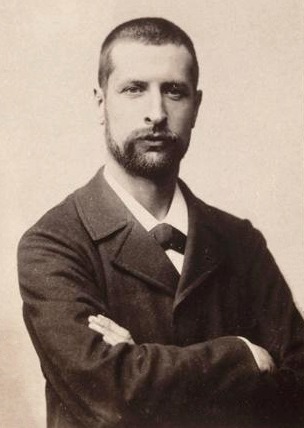
Say hello to Alexandre Yersin, a Swiss-French doctor and scientist.
Keenly interested in bacteriology, in 1886 he studied in Paris where Louis Pasteur was doing work in microbiology and worked on antiserum for rabies and antitoxin for diphtheria, two other famous scourges. (Antiserum, in the briefest of explanations, is basically a way to transfer antibodies from someone/something exposed to an infectious agent to a different person, thereby triggering the recipients immune system earlier and more vigorously EDITED TO ADD: this also applies to venom and this is actually how antivenom is made as well!)
In 1894, he was sent to Hong Kong to investigate the plague outbreak and it was here that he identified the bacteria responsible, the one that now bears his name, along with confirmation of its transmission route via rodents. (A Japanese scientist in Hong Kong at the same time, Kitasato Shibasaburou, independently identified the bacterium almost simultaneously as well, but because his documentations were not as clear it is Yersin who is generally credited with the initial find)
Yersin spent the next few years continuing his studies of the plague, traveling back to Paris in 1895 to develop the first anti-plague serum. It was the work of scientists like him, and so many others at this time, that paved the way for modern medicine and a path towards eradicating the diseases that have held us in their skeletal grip for so much of mankind's history.
...And perhaps, in the world of Ikevamp, that path owes just a little bit to a certain bespectacled German priest.
#ikemen vampire#ikevamp#ikevamp faust#spoiler#spoilers#ikemen vampire spoilers#ikevamp spoilers#how to tag this?#lore? background? idek#maybe just 'stuff i wish i'd known the first time i read his route'
77 notes
·
View notes
Text
KOKOKO! - Butu

This album marks one of my many attempts to become more acquainted with music from the African continent. The American music scene and English-speaking reviewers are woefully under-exposed to music from the Global South.
If you find yourself in the same boat, I recommend this electronic album from KOKOKO! collective, residing in the Democratic Republic of the Congo. Their third studio album Butu released earlier this July boasting twelve tracks. In a variety of languages, KOKOKO! mixes call-and-response, rhythmic chants, and high production value that highlights their Congolese origins and style.
Top Tracks: Donne Moi, Motema Mabe [!!], Mokili [!!!], Salaka Bien
RIYL: New Order, Björk, Alsarah & The Nubatones
#music#review#electronic#democratic republic of the congo#african music#music opinions#music review#music recommendation
3 notes
·
View notes
Text
this is in 2016.
Jewish activists have been kicked out of an Illinois synagogue for supporting Palestinian rights.
On Sunday, a conference on how to combat the growing boycott, divestment and sanctions movement was held at Temple Beth-El, in Northbrook, a suburb of Chicago.
During a panel discussion, Michael Deheeger, a 32-year-old member of Jewish Voice for Peace-Chicago, interrupted the speakers, expressing his support for Palestinian rights.
The mostly older audience responded with a staggering degree of hostility. Deheeger compared the audience to racist whites in the Jim Crow South.
“It was a throwback to pictures I’ve seen of white protesters in the South trying to uphold segregation,” he told The Electronic Intifada.
Three other activists had disrupted the conference before Deheeger – video of their action is below. “If there had been one person after me, I don’t know what would have happened,” he said.
“Unhinged”
In the video at the top of this post, Deheeger, who is filming, can be heard repeatedly declaring, “I am Jewish, I support Palestinian human rights.”
As Deheeger is carted out by police, camera in hand, one enraged person after another jumps out of their seat to taunt and curse at him.
“You support killing Jews!” says one man. “Get the fuck out of here!” says another.
Near the end, a woman shouts, “Hitler! Hitler!”
“They were so unhinged,” Deheeger said. “One guy even came up and punched me in the arm.”
The rage is striking given that Deheeger’s statement was hardly controversial. He was simply stating that Palestinians are people worthy of human rights.
“I’m not even sure if they see us as people any more when we stand up and do this stuff,” he added, referring to the hatred for anti-Zionist Jews espoused by Zionists who remain deeply invested in Israel’s colonial project. “They see us as race traitors.”
“It really just highlighted the amount of racism and violence that’s intertwined with the issue of Israel and Palestine in the Jewish community. And it’s passed down to kids,” said Deheeger, recalling his own support for Zionism when he was still in high school.
JVP-Chicago disrupted the event, said Deheeger, to show that “all these organizations claiming to represent American Jews and conflating anti-Zionism and criticism of Israel with anti-Semitism – they don’t speak for us.”
Wrong side of history
Chaired by the Republican congressman Bob Dold and Democratic state lawmaker Scott Drury, the panel at the conference included representatives from nearly every major Jewish communal organization across the political spectrum.
Dold is a chief sponsor of the Combating BDS Act of 2016, a piece of federal legislation that would authorize local and state governments to punish authorities that take measures against Israel or firms that abet its abuses of Palestinian rights.
A similar bill, which passed in Illinois last year, has been proposed in several state legislatures across the country.
Before being kicked out, Deheeger filmed this video of part of the panel discussion.
Assaf Grumberg, a former communications officer in the Israeli military now working for the Israel-funded pressure group StandWithUs, can be heard advising Jewish students to “build relationships with other groups on campus besides what you feel comfortable with.”
“If you have a friend who’s African American, who’s a member of Black Lives Matter and you’re genuinely interested in their movement then you need to go to your friend and have a conversation” about Israel, Grumberg says.
Grumberg echoes concerns raised by Zionist organizations in recent years about Palestine solidarity activists forging ties with other progressive organizations, particularly Black Lives Matter and immigrant rights groups.
Among the topics addressed in the panel were the growing efforts to push universities to divest from Israel or firms profiting from Israeli apartheid.
Bemoaning the “emotional strain” BDS campaigns have exacted on pro-Israel students, one panelist concludes that the best way to break campus divestment coalitions between Palestinians and other non-white student groups is to equate anti-Zionism with anti-Semitism.
The panelist was a student at Northwestern University, where the student government voted in favor of an Israel divestment resolution last year.
“The debate in our student government became not about Israel, it became about race privilege,” the speaker says.
“Senators in our student government will say, ‘we’re not anti-Jewish’ … but they’ll be convinced that they shouldn’t be Zionist because Zionism is a form of colonialism,” the speaker states. But “if it’s a new form of anti-Semitism then I think many student governments will not be so swayed by the tactics of BDS.”
As the audience applauds, the panelists are interrupted by Jews who strongly disagree.
Towards the end of the video, three young JVP-Chicago activists pop up from their seats to declare their support for Palestinian rights and BDS. Before they can get a word in, the crowd starts booing. A few seconds later a police officer shows up to escort the protesters out.
“As young Jewish progressives we support the boycott, divestment and sanctions movement in bringing about human rights and equality for Palestinians,” said 22-year-old JVP-Chicago activist Eli Massey in a statement following the protest.
“We are here to say that organizations like the Jewish United Fund and StandWithUs do not speak for all Jews, and on this issue are on the wrong side of history,” Massey added.
10 notes
·
View notes